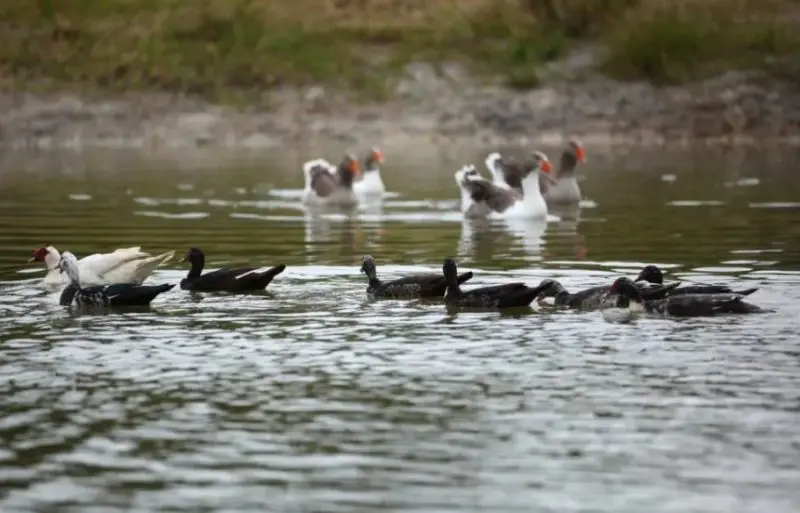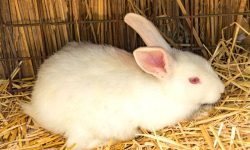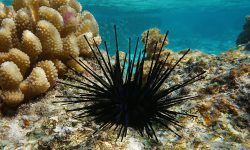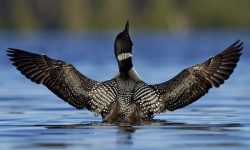Ducks are among the most recognizable and beloved waterfowl species worldwide. Whether gliding gracefully across a pond or waddling on land, they exhibit fascinating social behaviors. One common question many people ask is: What is a group of ducks called? The answer depends on where the ducks are and what they are doing.
In this article, we’ll explore the various collective nouns for ducks, their social behavior, and fun facts about these charming birds.
What Is A Group of Ducks Called?

Ducks are social birds that often gather in groups, but the terminology used to describe them varies depending on their activity and environment. Unlike some animals with a single collective noun, ducks have multiple terms based on their behavior, location, and even human traditions.
Flock – The General Term for a Group of Ducks
The word “flock” is the most widely used term for a group of ducks, applicable in various situations. Whether they are on the ground, flying, or resting, a collection of ducks can generally be called a flock. This term is commonly used for many bird species that gather together for protection, socialization, or migration.
Raft – Ducks on Water
When ducks are seen floating together on water, they are often referred to as a “raft.” This term comes from the way ducks cluster tightly, appearing almost like a makeshift raft drifting along a pond, lake, or river. Ducks, especially species like mallards and teals, gather in large groups on water for safety against predators and to stay warm during colder months.
Paddling – Another Term for Swimming Ducks
Similar to “raft,” the term “paddling” is used when ducks are seen swimming or floating on water. It refers to their characteristic movement, as they propel themselves forward by paddling with their webbed feet. This term captures the gentle and synchronized movement of ducks as they navigate through bodies of water.
Team – Ducks in Flight
When ducks are flying together in a coordinated group, they are sometimes called a “team.” This term emphasizes their cooperative movement, especially during migration. Ducks often fly in V-formations or loose groups to conserve energy and maintain communication, a behavior observed in species like mallards and pintails.
Brace – A Pair of Ducks
The word “brace” refers specifically to a pair of ducks. This term is often used by hunters, particularly in reference to game birds that are hunted in pairs. The term originates from older English hunting traditions, where a “brace” of birds often meant two that were captured or observed together.
Why Do Ducks Form Groups?
Ducks are highly social birds that thrive in groups, whether on land, in water, or in the air. Their tendency to form flocks is not just a behavioral trait but a survival strategy that provides several advantages. Here are some key reasons why ducks gather in groups:
Protection from Predators
One of the primary reasons ducks form groups is for safety. Predators such as foxes, hawks, eagles, and alligators pose significant threats to ducks, especially when they are feeding or resting. By staying in flocks, ducks increase their chances of detecting danger early. When one duck notices a predator, it often alerts the others through vocal calls or sudden movement. A group also creates confusion for predators, making it harder to single out and capture an individual duck.
Easier Foraging and Food Discovery
Ducks are omnivorous and rely on a variety of food sources, including aquatic plants, small fish, insects, and grains. Foraging in groups allows ducks to cover larger areas efficiently and locate food more quickly. Some species, like dabbling ducks, benefit from feeding in shallow waters together, stirring up nutrients and uncovering hidden food. In a group, ducks can also learn from one another, recognizing safe and abundant feeding spots through social interactions.
Better Navigation and Energy Conservation
During migration, many duck species fly in V-shaped formations, a strategy that significantly reduces air resistance and helps conserve energy. The lead duck breaks the wind, making flying easier for those behind it. Ducks take turns leading the formation, allowing individuals to rest while maintaining efficiency in long-distance travel. This teamwork helps ducks complete their migratory journeys with less fatigue, increasing their chances of survival.
Social Interaction and Mating Opportunities
Ducks exhibit strong social bonds, and forming groups plays a crucial role in communication, courtship, and mating. During the breeding season, males and females engage in elaborate displays, such as head-bobbing, feather ruffling, and vocalizations, to attract mates. Being in a flock increases their chances of finding a suitable partner. Additionally, young ducklings learn essential survival skills by staying close to their mothers and the flock, enhancing their ability to thrive in the wild.
Different Names for Duck Groups Based on Location and Behavior
Ducks are often seen in groups, but the terminology used to describe them varies depending on their activity and setting. These collective nouns reflect the behaviors and movement patterns of ducks in different environments.
Flock of Ducks – A General Term for Groups on Land or in the Air
The term flock is the most commonly used word for a group of ducks, especially when they are flying or gathered on land. This term applies broadly to many bird species that move together for safety, socialization, or migration. Ducks often form flocks when resting in open fields, marshes, or along shorelines, where they stay alert to potential predators. In flight, a flock of ducks can be seen moving in coordinated patterns, particularly during migration.
Raft of Ducks – Ducks Floating on Water
A raft of ducks refers specifically to ducks gathered closely together on the water. This term comes from the way ducks cluster in tight formations, resembling a floating raft. This behavior is beneficial for maintaining warmth, conserving energy, and avoiding strong currents. Many species, including mallards, teals, and pintails, exhibit this behavior when resting or feeding in lakes, ponds, and rivers.
Paddling of Ducks – Ducks Actively Swimming
When ducks are actively swimming, the group can be referred to as a paddling of ducks. This term highlights their movement, as ducks use their webbed feet to paddle through the water. Ducks often paddle in shallow waters, searching for food, such as aquatic plants, small fish, and insects. This term is commonly associated with dabbling ducks, which feed by dipping their heads underwater while keeping their tails above the surface.
Team of Ducks – Ducks in Coordinated Flight
A team of ducks describes a group of ducks flying together in a structured formation, such as the V-shape seen in migratory species. This term emphasizes the teamwork and coordination involved in long-distance travel, where ducks take turns leading the formation to conserve energy. Many migratory duck species, like northern pintails and Canada geese, exhibit this behavior during seasonal movements.
Brace of Ducks – A Pair of Ducks
The term brace of ducks refers to two ducks, often used in hunting terminology. Traditionally, hunters would use this term to describe a pair of birds taken together. While not as commonly used in casual conversations, “brace” remains a recognized term within certain communities, particularly those involved in game hunting and birdwatching.
Fun Facts About Ducks and Their Behavior
Ducks are not just known for their unique group names; they also exhibit fascinating behaviors that make them stand out in the bird world. Here are some fun facts:
Ducks Have Waterproof Feathers
Ducks produce an oil from a gland near their tails, which they spread over their feathers. This oil creates a waterproof layer, allowing them to stay dry even while swimming.
Ducks Sleep with One Eye Open
To protect themselves from predators, ducks can sleep with one eye open, keeping half of their brain alert while resting. This is known as unihemispheric slow-wave sleep.
Ducks Can Recognize Each Other’s Voices
Studies have shown that ducks can identify their mates and family members by sound. This helps them stay connected in large groups.
Some Ducks Migrate Thousands of Miles
Many duck species, such as the Mallard and Northern Pintail, migrate over long distances. Some travel thousands of miles between breeding and wintering grounds.
Male Ducks (Drakes) Lose Their Bright Colors After Breeding
After the breeding season, male ducks shed their colorful plumage and develop dull brown feathers, a phase called eclipse plumage. This helps them blend into their surroundings and avoid predators.
Ducks in Culture and Symbolism
Ducks have been featured in myths, folklore, and traditions across various cultures. They symbolize different qualities depending on the region:
- In Chinese culture, ducks, especially Mandarin ducks, symbolize love and fidelity.
- In Native American traditions, ducks are seen as messengers of change.
- In European folklore, ducks often represent adaptability and resourcefulness.
Conclusion
Ducks are fascinating creatures with unique social behaviors and terminology. Depending on their location and activity, a group of ducks can be called a flock, raft, paddling, team, or brace. These birds play essential roles in ecosystems, helping control insect populations and spreading plant seeds. Whether you observe them in the wild or in urban ponds, ducks never fail to captivate with their charm and intelligence. Next time you see a group of ducks, you’ll know exactly what to call them!






